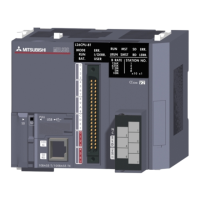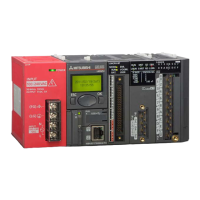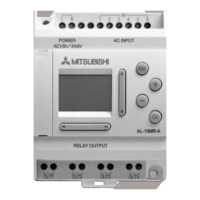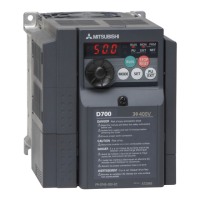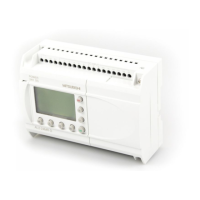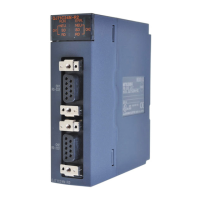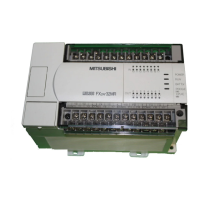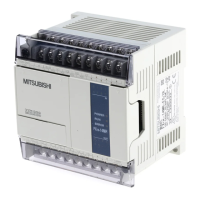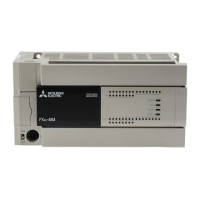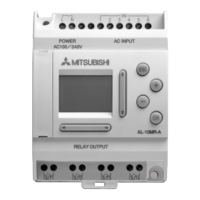3.2 Method of change screen
3. Screen system and method of change screen
18
3.2.3 Moving to another screen
• Use one of the following methods to move to another screen.
1) Moving to another screen using function keys (F1 through to F4 keys).
• Press a function key to move to the screen assigned to that function key.
2) Moving to another screen using screen selection keys(6) (S and T keys).
• If the symbol [ R ] appears at the upper right section of the screen, you can switch the screen upward
or downward using the screen selector keys(6).
• If two types of items are set for one screen, pressing the screen selector key will switch the item.
3.2.4 Normal operation mode
• Turn on DIP switch 8, and then turn on the power.
F1 F2 F3 F4
Manual setting screen
Tension setting screen
Taper rate setting screen
Tension monitoring screen
Extension screen*
Power-on
Manual
mode key
(13)
Automatic
mode key
(12)
• After turning on the power, the version number will appear, and then the screen
finally displayed in the previous operation (before turning OFF the power) will appear.
• Press the automatic mode selection
key(12) to move to the tension
setting screen.
• Press the manual mode selection
key(13) to move to the manual
setting 1 screen.
• Set the tension or manual output values using
the setting dial(16).
• If “No taper control” is set by the DIP switch, the
taper rate setting screen and a pictogram
“ ” will not appear.
• Use the screen selection keys(6) (Sand T
keys) to switch between the manual setting 1
screen and the manual setting 2 screen or
between the tension monitoring (total) screen
and the tension monitoring (right, left) screen.
• Use the corresponding function key(F1 to F4)
to move to the desired screen.
*Extension screen
• The screen set for an extension
screen using item number 52 of the
adjustment mode.
- - - - - - - - Refer to Sec. 7.4.
• When an extension screen is not set,
the extension screen and a
pictogram “ “ will not appear.
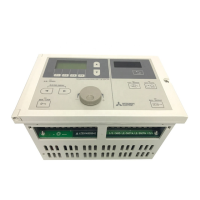
